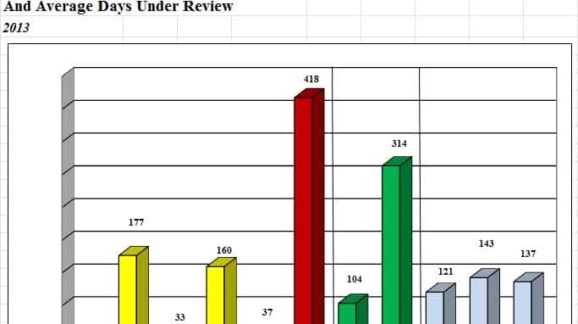Red Tapeworm 2014: When Regulations Get Delayed

This is Part 17 of a series taking a walk through some sections of Ten Thousand Commandments: An Annual Snapshot of the Federal Regulatory State (2014 Edition)
I tend to think bureaucratic regulation often creates tremendous harm, so it’s interesting when those who disagree decide to hold off on regulation when it suits them.
Politics play a role in delaying regulations sometimes, and 2012 appeared to be an extreme case with the delay of many big, expensive rules ahead of the election. For example, a Washington Post headline proclaimed, “White House Delayed Enacting Rules Ahead of 2012 Election To Avoid Controversy.” A former White House official detailed the “mother-may-I” environment that prevailed at the time, “As we entered the run-up to the election, the word went out the White House was not anxious to review new rules.”
The Washington Post summed up the matter as follows:
The number and scope of delays under Obama went well beyond those of his predecessors, who helped shape rules but did not have the same formalized controls, said current and former officials who spoke on the condition of anonymity because of the sensitivity of the topic.
A December 2013 report by the Administrative Conference of the United States on the growing length of time it took the Office of Management and Budget to review regulations reinforced the the Post’s conclusion, and other headlines did too:
- “Politics Cited in Regulatory Delays,” The Hill, December 15, 2013
- “Environmental Rules Delayed as White House Slows Rules,” New York Times, June 12, 2013
- “White House Slowed Rules in Election Year, Study Says,” Bloomberg, December 15, 2013
- “[White House Press Secretary Jay] Carney Sidesteps on Whether Regs Were Delayed Before Election,” The Hill, December 16, 2013

The chart nearby presents the number of E.O. 12866 rule reviews by stage and by economic significance for the 2013 calendar year. It also shows
number of days for review at OMB in 2013, which stretched to several months rather than the normal two months. OMB does not review independent agencies’ rules at all.
A more detailed breakdown of the number of rules reviewed, by type, and average days for review from 1991 through 2013 appears in my Ten Thousand Commandments report: Appendix: Historical Tables, Part D. One may note the pre-E.O. 12866 years depicted there, 1991-1993, show review times were shorter then, yet the number of rules was far higher.
Information on numbers of reviews and how long they take is worth reporting for clarity and perspective. However, in the grand scheme of things, whether it takes 120 days or 30 days for a rule to be reviewed, may not make a great deal of difference in a regime where the OMB reviews a few hundred out of several thousand annual rules, because cost-benefit analysis often does not occur in order to provide something concrete and reviewable in the first place.
Also, the underlying philosophy of the administrative state—that bureaucratic regulation automatically is appropriate and better than other forms of discipline—undermines what review and duration might otherwise clarify.
So, it’s important to be aware of rule review times, but in a fundamental sense it is a distraction.
Red Tapeworm 2014 Series:
- Part 1: Guess Which Is the Largest Government on Earth?
- Part 2: Tardy Bureaucrats Gone Wild
- Part 3: Reckoning the Dollar Cost of Federal Regulation
- Part 4: Regulations Catching Up to Government Spending?
- Part 5: Regulations Cost More than Federal Income Taxes
- Part 6: The Federal Government “Eats” 31 Percent Of The U.S. Economy
- Part 7: U.S. Regulation Compared to the World’s Largest Economies
- Part 8: The High Cost of Overcriminalization
- Part 9: Thousands of Federal Register Pages
- Part 10: A Record Number of Federal Register Final Rule Pages
- Part 11: Federal Register Pages Per Decade
- Part 12: Number of Proposed and Final Rules In the Federal Register
- Part 13: Cumulative Final Rules in the Federal Register
- Part 14: The Expanding Code of Federal Regulations
- Part 15: A Fourth of July Reflection on Presidential Executive Orders and Loss of Liberty
- Part 16: Over 24,000 Pen and Phone “Public Notices” Annually